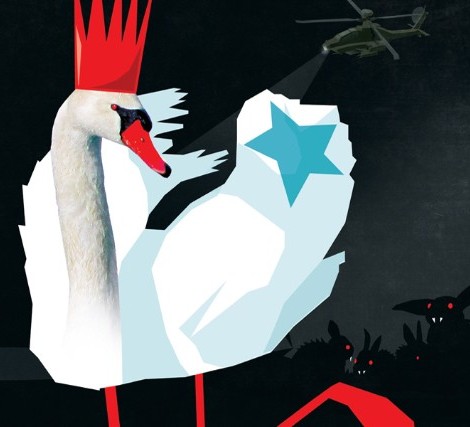Not everything ends happily ever after …
11/5/2012
What could be a more appropriate setting for a new fairytale than the land where fairytales began? Forget cookie cutter characters like the hero, the villain and the lovers – Black Fairytale is a different kind of story. This original and experimental dance piece explores the contrasts of good and evil and the shades of grey in between. Mixing in a heavy dose of reality, the performance dances around themes as diverse as love and war, and utopia and dystopia.
Black Fairytale choreographers Oded Graf and Yossi Berg are from Israel and the show’s choreography is inspired in large by their personal experiences living in Tel Aviv. “Our background and culture has a huge influence and is something that can’t be separated from the choreography,” Graf says. “All the pressure, temperament and politics come out in the dance.”
Graf and Berg feature alongside five local Danish dancers – making the work a unique collaboration between two politically and culturally opposite countries.
Exploring duality, the pair have also been influenced by the contrasts between their homeland Israel and the perceived utopia that is Denmark. “We have this curiosity coming from such an intruding place like Israel to this fairytale land that has been called the happiest place on earth,” Graf says. Playing on the notion of utopia and using it as a source of light against the production’s darker themes, the show provokes the audience to question their pursuit of a utopian world.
“We like to ask questions to ourselves as dancers and our audience. What is utopia, how do we achieve it, and what obstacles do we encounter along the way?” Berg explains.
The duo agrees, at least on a superficial level, that Copenhagen appears to be a good representation of a utopia. “Copenhagen is like a utopia with all its lakes and swans,” Graf says. But Black Fairytale delves beneath the shiny surface, exploring lesser discussed issues like prejudice or racism. “In Israel we are preoccupied with the lack of peace. In Denmark I found other problems – youth unemployment could be an example.” It is Berg and Graf’s intention that the piece’s existential nature allows every audience member, no matter whether they are Danish or foreign, to make their own connection to the show’s themes.
Tying in references to other fairytales, the performance steers clear of labelling characters as ‘good’ or ‘bad’, rather highlighting that all people, in reality, have good and bad attributes. For instance, the scene named ‘Paradise’ contains black moments interspersed with the more predictable peaceful ones. The storytelling is achieved by incorporating a number of interesting elements including English text, singing and a musical soundtrack supplied by the Berlin-based Finnish composer Markus Pesonen.
In their choreography, Graf and Berg place an emphasis on partner work and all seven dancers moving together as an ensemble. The duo began their partnership as choreographers in 2005 and say they have developed a fruitful working relationship that plays to each of their strengths. “We both have clear views about our art and know what we each like, but sometimes we surprise each other,” Berg says. They are likely to surprise you too – not all fairytales have to end ‘happily ever after’.
– Elise Beacom, The Chopenhagen Post

Photo robin Hart